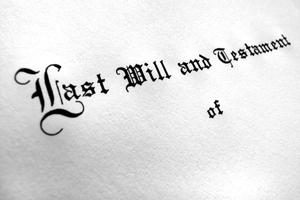The Difference a Decade Makes and How Your Estate Planning Can Keep Up
By this time, the tragic death of actor Philip Seymour Hoffman at age 46 has fallen out of the news headlines. Looking beyond his celebrity and the shock of his untimely death, we now know that this unfortunate event leaves the rest of us with the chance to consider how better estate planning could have made a difference for Mr. Hoffman’s loved ones. Mr. Hoffman executed a will in 2004 that left his entire $35 million estate to the mother of his child, Marianne O’Donnell. He and Ms. O’Donnell subsequently had two more children, but never married. While Mr. Hoffman was creative in making his wishes known regarding how he wanted his first child to be raised, the will failed to provide for any future children. Just a few well-crafted sentences in the will would have resolved questions over future-born children. There is, however, even so much more Mr. Hoffman could have done to protect and provide for his loved ones.
Ten years elapsed between the moment when Mr. Hoffman executed his will and his death. During that time, the federal estate tax exclusion was changed four times. It was raised from $1 million in 2003 to $3.5 million in 2009, was repealed in 2010, but returned in 2011 when Congress created a unified federal estate and gift tax exclusion of $5 million. Mr. Hoffman’s career and, presumably his earnings, also changed during this time. In 2005, he won an Academy Award for his role in Capote, and he acted in about another 27 movies. Given this sky-rocketing career path, and the multitude of changes in the federal estate tax laws, it would have been virtually impossible for Mr. Hoffman’s 2004 will to be an adequate “estate plan” at his death in 2014 when his family had grown to three children and his monetary estate to $35 million. Even if Mr. Hoffman had lived fully to his life expectancy, the 2004 will would not have been appropriate planning. This decade of changes show us exactly why treating estate planning as a one-off transaction so often fails to meet the client’s needs.
In today’s world, life can feel like it is speeding by and it is important to remember that good estate planning is not a static set of documents. If you have merely signed a stack of documents and set them on the shelf, then your plan will be stuck in that moment. As life keeps speeding by, your plan needs to keep up. Use your estate plan as a system—it should be the foundation of property arrangements, contracts, and transactions that address and are dependent upon personal circumstances and wishes, financial matters and legal facts. All of which change over time, sometimes in pieces and sometimes as a whole. Making changes to your estate planning along the way will insure your plan keeps up with the rest of your life. We call this “moving at the speed of life,” and we encourage you to take this approach to make sure your estate planning does what you want for the benefit of your loved ones.

